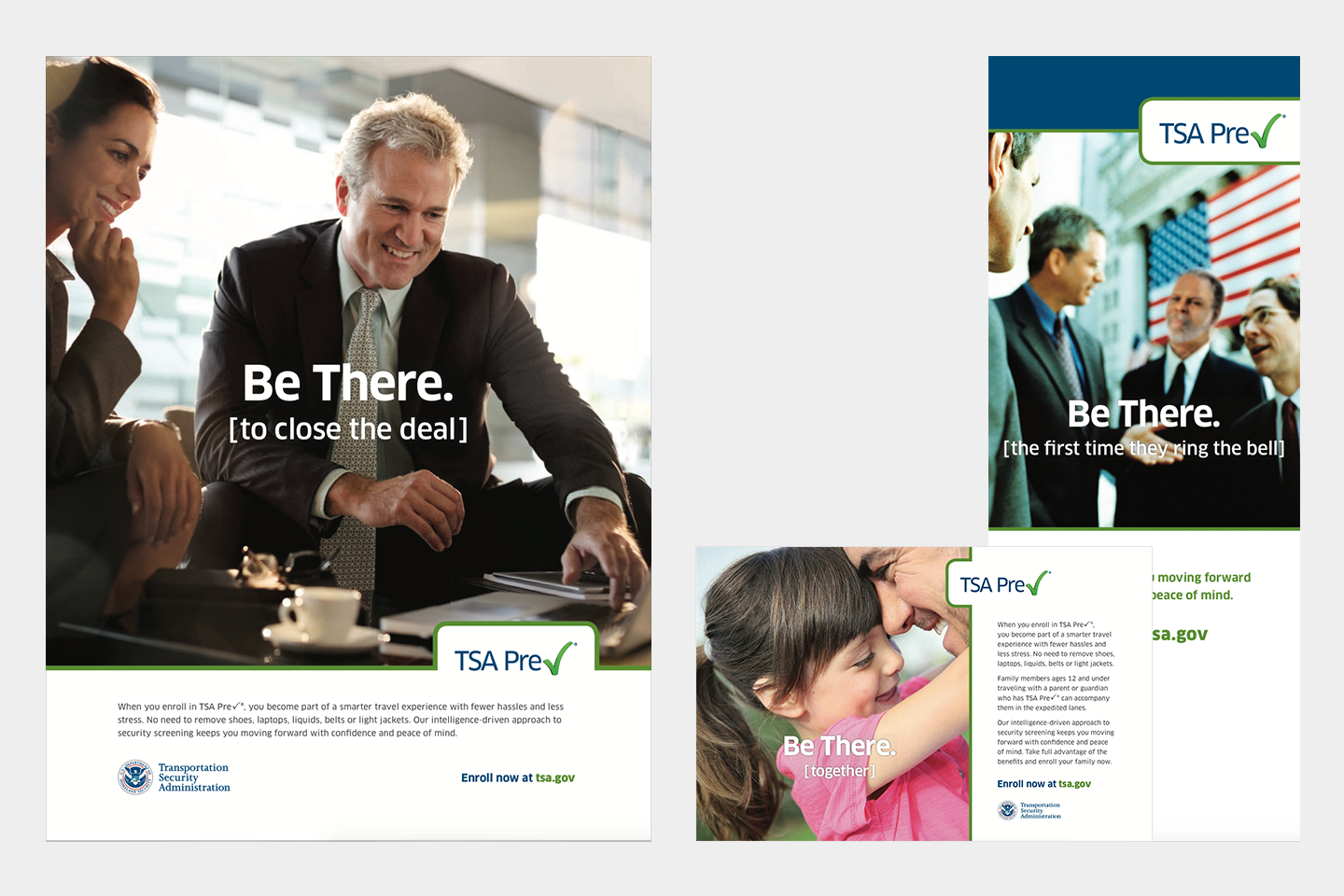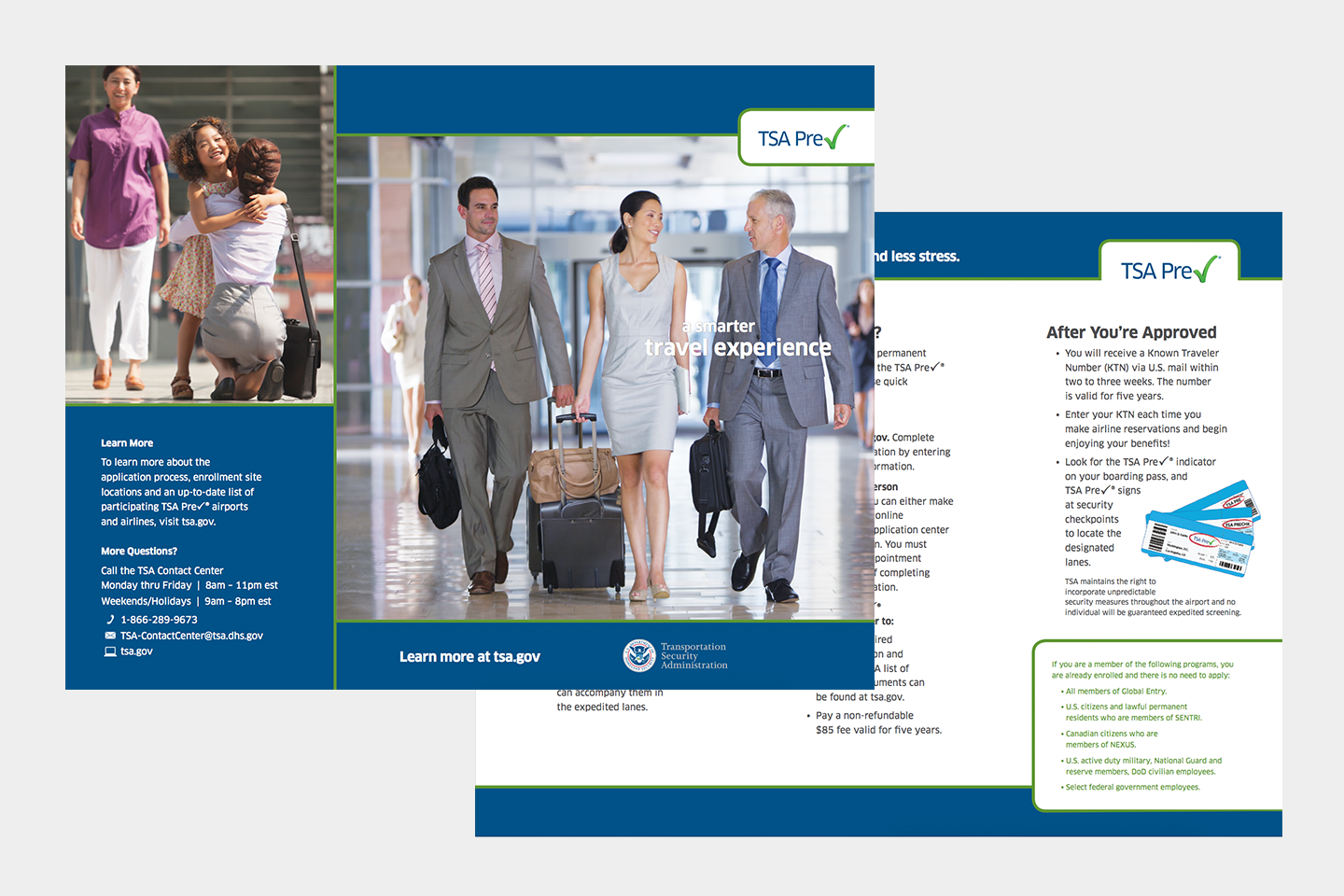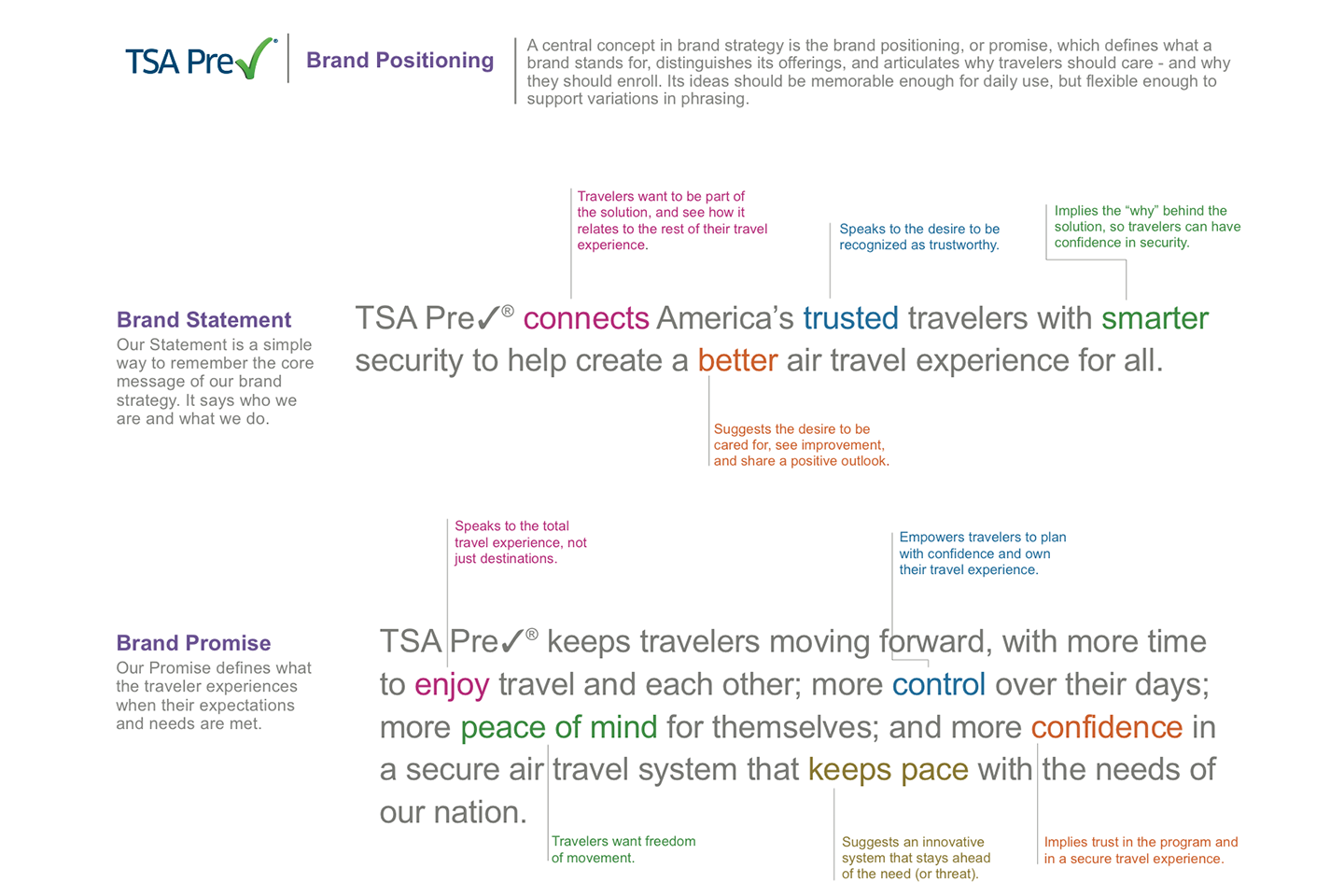Transportation Security Administration (TSA)
Situation / Challenge
The Transportation Security Administration (TSA) is charged with securing our nation’s air transport system to ensure freedom of movement for its people and to enable commerce. Protecting this system means staying ahead of ever-evolving threats. The best way to maintain this strategic advantage is through risk-based security (RBS) – a threat assessment and management strategy designed to ensure both effective protection for the system and its users, and efficient operation for the agency.
TSA PreCheck is TSA’s answer to this challenge. It’s an enrollment-based, expedited security screening program that uses RBS to speed trusted travelers on their way through American airports. Travelers enrolled in TSA PreCheck can pass through airport security without having to remove their shoes, belts, light jackets, laptops or bagged liquids. Not only does TSA PreCheck make traveling more convenient and less stressful for enrollees, it helps TSA focus attention on passengers about whom less is known.
The agency initially rolled-out TSA PreCheck to frequent flyers from eleven participating airlines. With this model proven at over 119 airports across the U.S., and with plans to expand the program to hundreds more facilities, it was time to raise the program’s visibility to a whole new level – and dramatically increase paid enrollment. TSA turned to Sage to develop the brand positioning for the TSA PreCheck program and associated marketing and brand strategies that would drive awareness, consideration, enrollment and engagement of various government-to-consumer (G2C) target audiences, including a variety of traditional government-to-business (G2B) stakeholders.
Approach
We began the brand strategy process by examining current TSA PreCheck perceptions among key stakeholders like airlines, airports, the travel and tourism industry, and TSA employees themselves. Our research revealed distinctive opportunities to identify TSA PreCheck with a select set of rational and emotional appeals at the intersection of convenience and security – appeals that fit well with the moments of discovery, sharing and arrival that define travel. Our research also revealed that travelers view security screening as an interruption to their travel experience. Our creative challenge therefore would be to make screening both relevant and enabling to their entire travel experience, from pre-travel planning and commuting, through the airport and flight, and ultimately arrival – turning a place of “no” into a place of “yes.”
We used these understandings and this rational-emotional framework to create an engaging campaign theme connecting the idea of smarter security with achieving key traveler goals. Sage’s “be there” campaign tapped into each traveler’s differing idea of what “destination” means: a successful business meeting; a gathering of friends and family; even summiting a mountain. Sage produced creative executions for all these scenarios, and applied our understanding of the total travel experience to identify the right media partners for this message and deliver it across that experience.
Results
As Sage compiles and analyzes data to track the early results of the TSA PreCheck, “be there” national advertising campaign, we define our greatest initial success by the eager adoption of the TSA PreCheck brand by aligned industry partners. Airlines, hotels, airports, port authorities, and other various travel and tourism organizations have begun to include TSA PreCheck, messages in communications to their stakeholders. Through partnership activation, TSA PreCheck, is achieving substantial brand exposure and awareness at no additional cost to the taxpayer.




